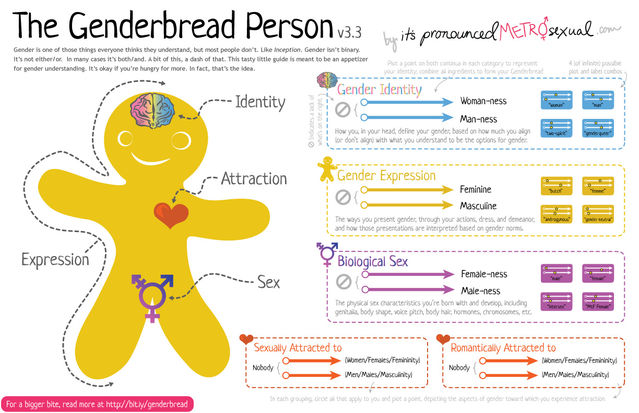Transgender
How to Talk to Kids About What it Means to be Transgender
With "bathroom rights" in the news, your kids may have questions.
Posted May 14, 2016
For the past couple of months, and especially this past week, the issue of transgender kids in schools has been splashed across the news and social media. The issue has been swirling around for several months, with Target (again) making headlines with their commitment to be progressively inclusive, and then with North Carolina's "bathroom bill." In response to all this, the White House issued guidelines this week directing public schools to allow transgender students to use bathrooms matching their gender identity. Schools were told, "transgender students [should] enjoy a supportive and nondiscriminatory school environment." This message echoed what Attorney General Loretta Lynch said in her announcement that, "There is no room in our schools for discrimination of any kind, including discrimination against transgender students on the basis of their sex."
With all of this media attention, kids who are not transgendered may have questions about what this issue is really about. This can sometimes be a difficult topic for parents, in part because it involves having a conversation about genitalia, and frankly no one looks forward to THAT discussion. But this is a teachable moment. We should seize the moment to discuss with our kids what gender identity is and what it means to be transgender... and what it does not mean. Any time we can help our children be more knowledgeable about someone else'e life, we have the opportunity to also help them be more compassionate and empathetic.
So, here is a primer for how to have that conversation with a child in elementary school:
"Some people may think there is only one way to be a boy or a girl. But there are actually lots and LOTS of different ways to be a boy or girl. Before a baby is born, there is a really complicated series of events that determine whether we are a boy or girl. There are chromosomes, which is the biological material babies get from each parent; there are hormones, which is a chemical that can change how we develop; and there is the brain, which develops in ways we don’t fully understand. All of these parts of our biology determine how our brains develop, how our bodies look, and whether we have a penis or vagina when we are born. When we are born, doctors look at our outside body parts and decide to label us as either a boy or a girl. But it is MUCH more complicated than just that. Our outside body parts are only one part of what makes us a boy or girl. Because it is so complicated, sometimes how we look on the outside doesn’t match how our brain feels on the inside. Remember, how our brains develop sometime doesn't match how our outsides look. This doesn't happen a lot, but it does happen. There is nothing wrong with this, it just means it is little more difficult for that person.
For people who are born this way, they sometimes identify themselves as transgender. All this means is that the how a person’s gender looks on the outside doesn’t match how their gender feels on the inside. The only real solution for them is to change how they look on the outside (because we can't change our brains, we are stuck with those). So being transgender simple means that a person has changed on the outside to match how they feel on the inside. Sometimes they just change their name, clothes, and hair, and sometimes they have surgery to change their bodies.
It is important to remember that they are not doing it to make someone else feel uncomfortable or because they want to use a different bathroom. Many times, you may know or see someone who is transgendered and you don't even know it. They look like a boy, feel like a boy, act like a boy, and use the boys' bathroom. Remember, they are a boy, even if the doctor called them a girl when they were born because of their outside body parts. That why we would refer to that person with words like he and him.
The most important thing to remember when you hear about people who are transgender: They are exactly the same as everyone else, except for this one part of how their gender works. And remember, EVERYONE is born with traits that makes them different from other people. For example, you have XX, XX, XX (e.g., You have glasses, curly hair, and ADHD). That is what makes people so interesting. We are all different from each other. We have to accept people for how they are and make sure everyone feels included. It is wrong to make people feel sad or left out simply because how their gender works is a little different than yours."
I also find this "Genderbread Person" to be a helpful visual aid for how complicated gender actually is. In many ways, though, there is simplicity in the complexity. Just ask people how they identify, and then respect that. Simple.



